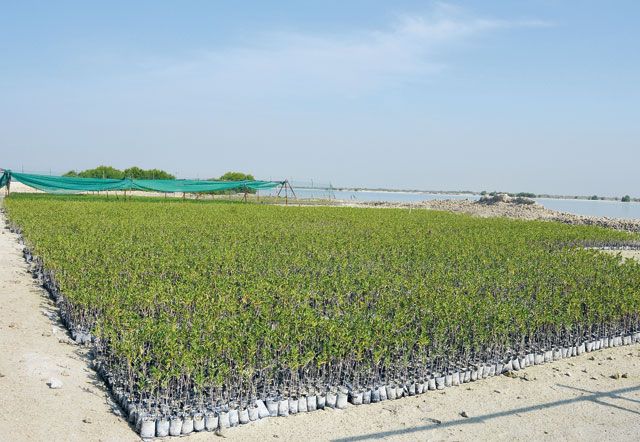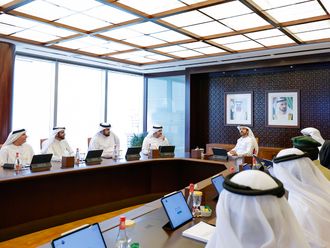Abu Dhabi: Saplings just a few days to a month old wait patiently for their evening bath from Mother Nature, at a nursery on a tucked away island, that appears no more than sand dunes and a massive construction site from the outside.
Only once the saplings are big enough will they be able to become part of a larger forest across the sea channel separating them.
Saadiyat Island is blooming with life, mangroves and their saplings being an integral part of the ecosystem.
The island, 500 metres off the coast of Abu Dhabi, is poised to be the cultural hub of the region, housing the Louvre Abu Dhabi and the Guggenheim Abu Dhabi amongst other iconic projects.
While these structures involve massive construction and constant interference with nature, the developers are keen on limiting environmental damage, they said, as journalists were taken on a field visit.
Development
"We have pledged to plant two mangroves against every plant that is lost in the transformation of the island. Development involves a bit of damage but we are committed in preserving the 1.5 square kilometres of mangroves on Saadiyat", said Nasser Al Shaiba, Head of Environmental Department at Tourism Development & Investment Company (TDIC), the developer.
Ongoing widespread development has affected the naturally-grown mangroves around the island, which could lead to degradation and loss of habitat, according to the Environment Agency Abu Dhabi (EAD), who are helping the TDIC achieve their conservation goals.
A mangrove nursery has been set up at an intertidal zone, an area that is exposed to air during low tides and submerged in water during high tides. Avicennia marina, is the only species that grows on tidal areas along the coastline, such as Saadiyat.
Seeds are hand-picked by workers from the natural mangrove clusters. These are then bagged and arranged in rows at the nursery. As the tide increases, seawater flows into the nursery and gently bathes the saplings providing them with the nutrients they feed on.
Grown plants, about one to two years old, are then replanted between October and April, when the temperature is feasible.
The plants are looked after for about two years before they are left to live their own natural lives.
"More than 500,000 saplings will be planted in two phases. Planting mangroves has both environmental and economic benefits," said Dr Himansu Das, Associate Scientist at EAD.
"They protect the coastlines by preventing erosion caused by waves and ocean currents. They act as important nurseries for small fish, shrimp and crustaceans, besides attracting bird life to the island," he explained.
The nursery has produced 750,000 seedlings in two years, but not all of these grow to be adults since the mortality rate is about 10 to 25 per cent.
Technical team
EAD's technical team conducts surveys to assess potential areas for mangrove plantation to curb mortality rate. Sites are selected based on soil type, tides etc.
Despite the fact that mangrove forests are increasing in size in the emirate, EAD has identified several sites that have been negatively impacted by human activities and unsustainable development, they said.
The officials urged developers to rehabilitate affected areas by undertaking similar extensive mangrove plantation programmes.
Mangroves: Seeds of hope
Mangroves are tropical vegetation occurring on the fringe of low lying protected shorelines, estuaries and lagoons.
Approximately 85 per cent of UAE's mangroves occur in the Abu Dhabi emirate.
Recent estimates suggest mangroves cover 40 square kilometres of Abu Dhabi. The mangroves here are represented by only one species, the gray mangrove, Avicennia marina.
Source: EAD













